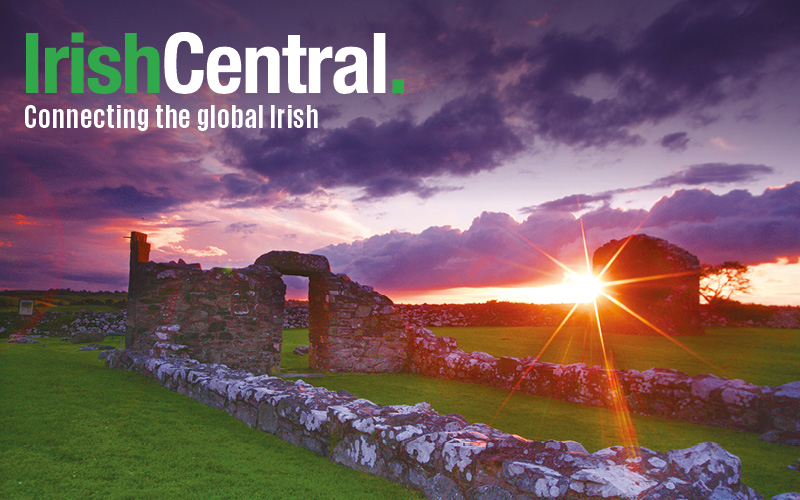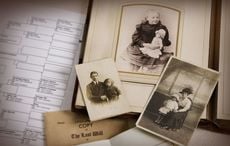My grandfather Allie Gorman often spoke of the Protectory or “the orphanage” where he spent time as a teen. It seems no one thought to ask, “If your father and stepmother were alive at the time, why were you in an orphanage?”
Born in 1902 in lower Manhattan, near Battery Park, Alexander “Allie” Gorman grew up in Brooklyn. The child of an immigrant—his father was from County Monaghan, Ireland—Allie lived in poverty, survived epidemics, fire and an alcoholic, abusive father.
Death was a constant companion. When Allie was three years old his two-year-old sister, Lizzie, died of malnutrition; that same year his eight-year-old brother, George, died of spinal meningitis during a citywide epidemic, and three siblings died before they were a year old. His mother died of tuberculosis when he was four.
When Allie was six, he and his younger brother, Willie, were horribly burned in a fire. I remember watching my grandfather shave when I was a young boy and noticing the huge amorphous slab of skin that extended along the entire side of his body. I asked him what that was. “It’s a scar, Charles,” he said. “My brother Willie and I were playing with matches and Willie caught on fire. I tried to put the fire out. This is what happened.” Allie’s father, George, and his stepmother had left the two young boys alone for the day.
A few years ago I found an article in a 1908 edition of the Brooklyn Eagle, which described the fire and its aftermath. The words “blazing garments” and “little sufferers” summoned up vivid images of my grandfather’s wounds and moments I spent staring at them, imagining, as only a young boy could, the fright and horror of the fire. How had that fire shaped the way he viewed the world and how had it influenced his life? I was reminded of my father’s comment about his father-in-law: “Your grandfather Allie was the most fearless man I ever met.” How much of his fearlessness was borne of this incident; I could only guess.
But the “Protectory,” and why my grandfather was there remained a mystery. I began researching the events of my grandfather’s life and learned that the Catholic Protectory was an institution organized on April 14, 1863, which worked with impoverished and abandoned children, many of them orphans, who were running wild through the New York slums. The children were taught discipline and structure. Academic and vocational courses, which trained children for various trades and prepared others for college, also helped build each child’s self-esteem.
I learned that the Christian Brothers ministered to the boys. I contacted the organization and they confirmed they had tended to the boys at the Protectory. They suggested I contact the Church of Latter Day Saints in Salt Lake City, which has an extensive Family Research Center, to determine if the Protectory’s records were available. I called the church and they referred me to one of their local genealogical centers not far from my home. They had the records on microfilm; I found the Protectory my grandfather had talked about. The identification card was a revelation.
One hundred years after my grandfather’s stay at the Protectory, I knew the truth: The Protectory was not only an orphanage, but also a detention center for children who had violated the law. At the age of fourteen, Allie began a thirteen-month stay at the Protectory for stealing wood and assaulting a watchman.
My grandfather told stories of playing baseball and soccer at the Protectory; however, he also told stories that suggested cruelty bordering on sadistic. When my grandfather smiled I’d notice that he was missing a tooth. My mother told me why. One morning he was leaning over a sink, washing his face, when a Brother came up from behind him and grabbed his side. My grandfather, still suffering residual pain from the burns he had sustained in the fire, wheeled around and punched the Brother in his mouth. His punishment? According to my grandfather, they took him to the infirmary and pulled out one of his teeth: there was no Novocain, no painkiller.
Soon, I learned of others who were at the Protectory with my grandfather. One was John Henson, age 15, who was convicted of manslaughter. Henson poisoned a man with a pesticide used to kill rats. And then there were the so-called “colorful characters” who spent time at the Protectory with my grandfather: Jimmy “The Shiv” DeStefano, who would become a crony of the notorious gangster Al Capone and a member of The Five Points Gang, eventually landed in Sing Sing and became known as the Death House Barber. He gave men and one woman, Ruth Snyder, their final haircut before they were strapped into the electric chair.
Joe Valachi, who would become a convicted felon and infamous Mafia informant, was sent to the Protectory for hitting a teacher in the eye with a rock. Valachi was quoted in Peter Maas’ book The Valachi Papers. “As far as the brothers at the Protectory were concerned, some of them were okay and some were real bad. You wouldn’t believe what some of them were like with the young boys…I won’t go into that,” Valachi said.
Many of the era’s gangsters came from broken homes and spent a portion of their youth in reform schools similar to the Protectory. Vincent “Mad Dog” Coll, who was raised at times by his sister and at times by anyone who would take him, found trouble at an early age, bouncing from one Catholic reform school to another. A ruthless killer and kidnapper, Coll was gunned down, gangland style, in a phone booth on West 23rd St. in Manhattan.
A lifetime of crime and imprisonment was often the fate of those who passed through the Protectory and other reform schools. As for my grandfather, he left the Protectory and joined the Merchant Marines; he traveled the world, returned and married my grandmother Florence. They had five daughters, including my mother Dorothy.
He worked hard, first delivering coal, and then in his thirties he became a union representative. He met with Mayor Fiorello LaGuardia in 1940 to help settle a coal strike during a stretch of cold weather. A compassionate man, my grandfather told the mayor that the temporary shutdown of coal delivery was an “outrageous piece of cruelty.”
Grandpa Allie became a loving father and I could not have had a more loving grandfather. But what enabled my grandfather—the victim of a cruel childhood, poverty, an alcoholic father, his mother’s death when he was four, a horrific fire, the deaths of six siblings, thirteen months in reform school, and a variety of physical, verbal and emotional abuse—to lead a life filled with good deeds and healthy relationships, and to become a productive member of society, while others are left broken and isolated? Given a cruel childhood how does anyone function psychologically at a far greater level than his or her experience might predict?
I’m not sure I can answer those questions, but I do know I’ve learned that within my grandfather’s stories there exists a wellspring of knowledge that I can access: From his suffering I’ve learned compassion; from his struggles I’ve developed empathy; from his pain I draw strength. That is my grandfather’s legacy.
---
Charles R. Hale was born, raised and educated in New York. He is a former partner of a NYC based consulting firm Hale, Borenstein Ltd. Charles, along with Niamh Hyland, is a cofounder of Artists Without Walls an organization purposed to inspire, uplift and unite people and communities of diverse cultures through the pursuit of artistic achievement. His film “Walls: We Are Not Forgotten,” about the life of singer Judy Collins, was presented at the 2012 Eugene O’Neill Award ceremony honoring Ms. Collins. In 2013 the City University of New York honored Charles for ”Outstanding Service to New York and Irish America.”
*Originally published in March 2015.




Comments